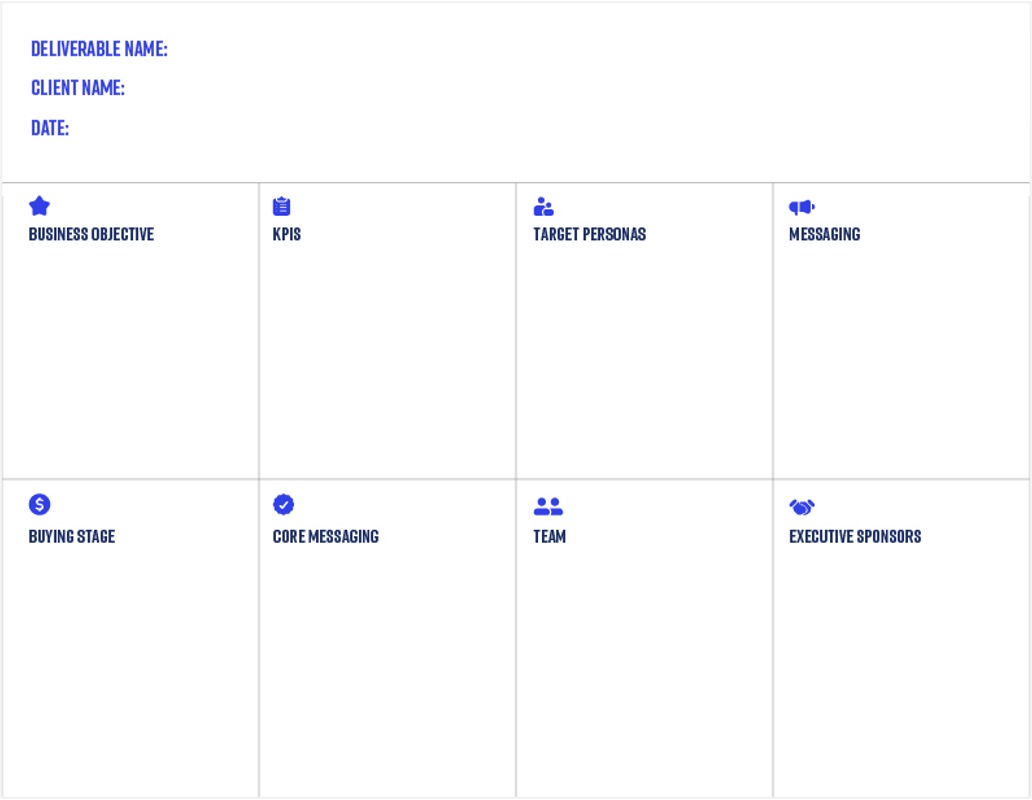Overview
In a digital-first world, marketers need a framework to develop, execute and measure results. This playbook will show you this framework and set the stage for deeper understanding of a digital-first marketing strategy. This playbook will cover the Inputs, Activities, Team and Deliverables for creating a digital-first marketing strategy.
Outcomes of this play
Digital-first Marketing Strategy
This framework will enable you to rethink your marketing to make-up for the loss of in-person tactics. This framework will allow you to choose the appropriate mix of tactics to drive audiences to digital experiences.
Sales and Marketing Alignment
Using a digital-first marketing strategy will rely on sales and marketing interlock. Creating this strategy will be a forcing function to being on the same page with your sales counterparts.
Increased Engagement
By embracing the opportunities from digital experiences, audiences will benefit from experiences tailored to them. This will in turn increase engagement that marketers and sales can leverage insights from.
Process
Inputs: Personas
Personas are critical components of your marketing strategy. Key portions required will be the information about how they prefer to consume information and key challenges and initiatives.
Inputs: Buyer’s Journey
An understanding of your customer and buyer’s journey is foundational for alignment with digital experiences. It is critical that these documents be updated as quickly as possible based on changing market trends.
Activities: Kick off with assigned Team
Kick off with assigned Team. The team that is closest to the development of the Strategy, the task force, should meet to align on goals and build out requirements.
Activities: Identification of Gaps
This team must document where there are current gaps in the strategy. For example, if in-person events and meetings were the core of original sales closing motions, this must be added to critical priorities.
Activities: Alignment with Events
Since many events teams weren’t under the marketing umbrella, alignment wasn’t always easy. For success in a digital-first world, there must be complete alignment between marketing and events to ensure synchronization of activities in the digital realm. And to ensure that when in-person events return that there is a digital component.
Team
The required team members to operationalize basic engagement techniques include:
Core:
- Marketing leadership
- Digital marketing
- Demand marketing
- Marketing operations
- Events
- Solutions marketing
Extended
- Sales
- Global counterparts,
especially in marketing - Partners
- Customer success
Deliverable: Strategy Document

Next Steps
One of the most critical components of setting this strategy is having an open mind. Marketers must question entrenched assumptions about buyers, their journeys in order to develop a marketing strategy that will resonate absent of in-person tactics. It can’t be underestimated how having up-to-date information about personas and sample buyer’s journeys to inform the creation of this strategy.
How others have used this play
The #Webinerd Channel
How Everbridge Maintains Pipeline Velocity with Virtual Events